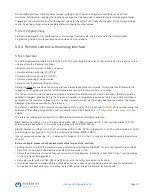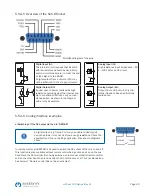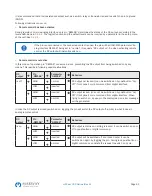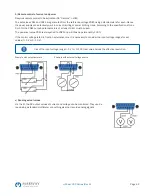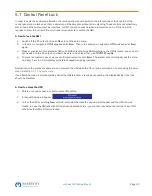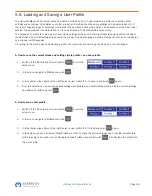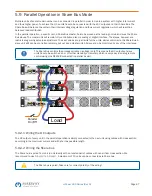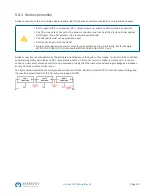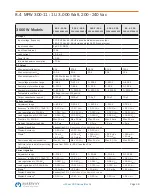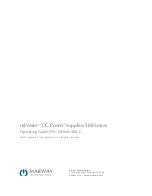
Page 51
mPower 300 Series (Rev G)
6.3 Calibration (readjustment)
6.3.1 Preface
The mPower 300 series features a function to readjust the most important output values when doing a calibration and in
case these values have moved out of tolerance. The readjustment is limited to compensate small differences of up to 1%
or 2% of the max. value. There are several reasons which could make it necessary to readjust a unit: component aging,
component deterioration, extreme ambient conditions, high frequent use
In order to determine if a value is out of tolerance, the parameter must be verified first with measurement tools of high
accuracy and with at least half the error of the mPower unit. Only then a comparison between values displayed on the
mPower unit and true DC output values is possible.
For example, if you want to verify and possibly readjust the output current of model MPW 300-01-0080-100 which has
100 A maximum current, stated with a max. error of 0.2%, you can only do that by using a high current shunt with max.
0.1% error or less. Also, when measuring such high currents, it is recommended to keep the process short, in order to
avoid the shunt heating up too much. It is furthermore recommended to use a shunt with at least 25% reserve.
When measuring the current with a shunt, the measurement error of the multimeter on the shunt adds to the error of the
shunt and the sum of both must not exceed the maximum error of the unit under calibration.
6.3.2 Preparation
For a successful calibration and readjustment, a few tools and certain ambient conditions are required:
•
A measurement device (multimeter) for voltage, with a max. error of half the mPower's voltage error. That measurement
device can also be used to measure the shunt voltage when readjusting the current
•
If the current is also going to be calibrated: a suitable DC current shunt, ideally specified for at least 1.25 times the max.
output current of the mPower and with a max. error that is half or less than the max. current error of the mPower unit
•
Normal ambient temperature of approx. 20-25°C (68-77°F)
•
Warmed up mPower unit, which has been run for at least 10 minutes under 50% power
•
An adjustable load, such as an electronic load, which is capable of consuming at least 102% of the max. voltage and
current of the mPower unit
Before you can start calibrating, a few measures have to be taken:
•
Let the mPower unit warm up in connection with the voltage / current source
•
In case the remote sensing input is going to be calibrated, prepare a cable for the remote sensing connector to DC
output, but leave it yet unconnected
•
Abort any form of remote control, deactivate master-slave mode, set system to U/I mode
•
Install the shunt between mPower unit and load and make sure the shunt is cooled somehow
•
Connect external measurement device to the DC output or to the shunt, depending on whether the voltage is going to
be calibrated first or the current
6.3.3 Calibration procedure
After the preparation, the system is ready to be calibrated. From now on, a certain sequence of parameter calibration is
important. Generally, you don’t need to calibrate all three parameters, but it is recommended to do so.
Important:

